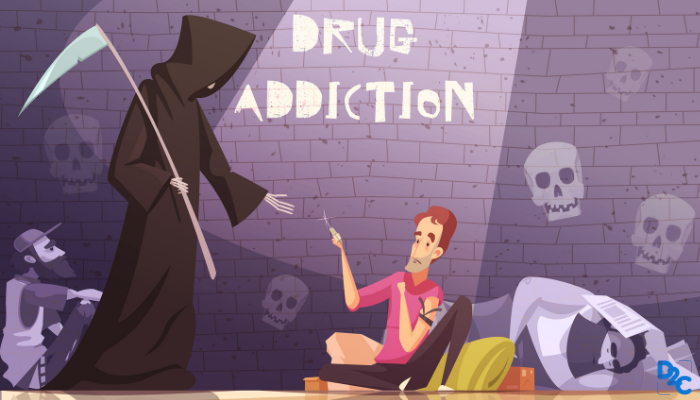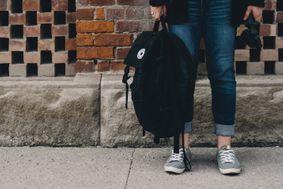Is India doing enough to fight drug abuse?

Other than the coronavirus pandemic, there is one thing that has attracted the attention of the general public. If you haven’t already guessed it, it is the rise of drug abuse in India. The issue of drug abuse in India has prevailed in the country and beyond, for ages. And even though numerous initiatives have been taken by the government and its people to bring an end to the illegal usage of drugs, it somehow still exists in the country.
With breaking news highlighting the issue every now and then, we have more often than not, thought about the roots of the cause and steps taken by the government of the country to fight this abuse, even if we do not have an intricate picture of the problem at hand.
A probable topic for group discussion during MBA admissions, it is crucial for you to understand the situation in detail to list relevant points and facts during the discussion. To ensure that you know enough about the state of drug abuse in India, we have mentioned a few facts that talk about the two sides of the coin in quite some detail.
The concerns at hand
The Ministry of Social Justice and Empowerment conducted a survey which discloses that India is home to about 70 million drug addicts. Here are a few points that speak of the issues at hand:
- In 2019, a study was conducted by AIIMS, Delhi in association with 15 NGOs and 10 medical institutes on the prevalence of drug abuse in India. This study establishes the fact that a substantial percentage of the country’s population uses psychoactive substances which include cannabis, alcohol and ophoids. In addition, the study states that adult men top the list of users and amidst all psychoactive substances, alcohol is most commonly used, followed by cannabis, ophoids (opium, heroin) and inhalers.
- Another survey conducted by the East Delhi Municipal Corporation (EDMC) revealed alarming stats that said one out of every six children in the capital of the country abuses drugs in one of the many forms.
- The report confirmed an earlier survey conducted by the Delhi Commission for Protection of Child Rights which declared that 100 per cent of children who indulge in crimes, abuse substances, contraband or alcohol.
- Following the inception of the Narcotic Drugs and Psychotropic Substances (NDPS), the Ministry of Social Justice and Empowerment has conducted two major nation-wide surveys in the last three decades. Conducted in 2004 and 2019 respectively, the surveys suggest that the use of drugs in India is on an unabated rise.
- The recent report states that the use of opioid has increased from 0.7 per cent to a little more than 2 per cent and in terms of magnitude, it has risen to 22 million from 2 million.
- What’s even more disturbing is the fact that the heroin has replaced the use of natural opioids (poppy husk and opium), taking the place of the most commonly used opioids. Also, there has been a significant increase in the use of other synthetic drugs.
- Moreover, a survey by National Mental Health, conducted in 2015-2016, stated that a treatment gap of more than 70 per cent prevailed for drug use disorders.
- Also, only 5 per cent of people diagnosed with illicit drug use disorder receive inpatient care. This is a major cause of concern as it clearly indicates a treatment gap which is a result of poor utilization, accessibility and quality of health care.
The positives - Initiatives taken by the government
The government, over the last three decades, has actively been involved in taking steps to curb the menace of drug abuse in India. Here are points that talk about the steps and initiatives taken by the government of India:
- To begin with, the constitution of India comprises article 47 of the Directive Principles of State Policy which directs the state to improve the health of the public and take initiatives to prohibit the use and consumption of intoxicating drugs and drinks that are injurious to health.
- India is a part of the three United Nations drugs conventions - Convention against Illicit Traffic in Narcotic Drugs and Psychotropic Substances, 1988; Convention on Psychotropic Substances, 1971; and Single Convention on Narcotic Drugs, 1961.
- In 1985, the Parliament passed ‘Narcotic Drugs and Psychotropic Substances Act’ to tackle the problem of illegal drugs. This act added stringent and long-term prison sentences in addition to heavy fines for offenders.
- On similar lines, another act passed by the Parliament in 1988 was called the Prevention of Illicit Traffic in Narcotic Drugs and Psychotropic Substances Act.
- Also, the government of India has enforced agencies like Narcotics Control Division, Narcotic Control Bureau (NCB), Department of Central excise & customs, revenue intelligence along with para-military and armed forces to deal with the issue of drugs control.
- Moreover, a joint committee has been constituted to curb the menace of smuggling of drugs in India along international borders. This committee comprises four central ministries that include Health, Home Affairs, Social Justice & Empowerment and Finance.
- In order to scale the existing services, the Ministry of Social Justice and Empowerment rolled out the 'Central Sector Scheme of Assistance for Prevention of Alcoholism and Substance Abuse and Social Defence Services’.
- In 2018, a five-year plan was also published by the Ministry of Social Justice which is called the ‘National Action Plan for Drug Demand Reduction’.
- To top it all, more than four hundred NGOs across the country function as Integrated Rehabilitation Centre for Addicts today.
Concluding Remarks
India has taken certain early measures and decisive steps in order to address and tackle the drug problem at hand. But even though the government has a committed workforce at its disposal in addition to numerous programmes and policies, there is a need to evaluate and improve the current programmes such that they can have a lasting effect on the population of the country. To make that happen, a coordinated effort between Ministries along with uniform policies and scientifically informed choices will have to be put in place to reduce the supply chains of illegal drugs.
Login to continue reading
And access exclusive content, personalized recommendations, and career-boosting opportunities.
















Comments
Add comment